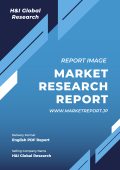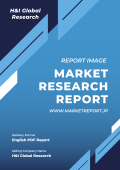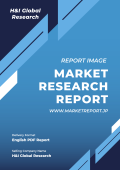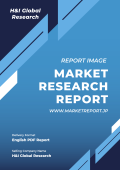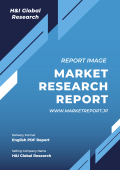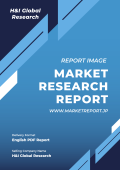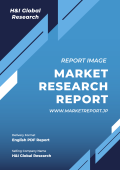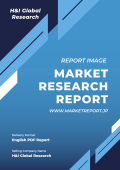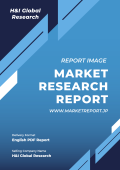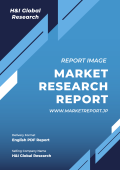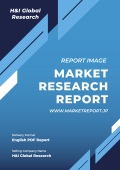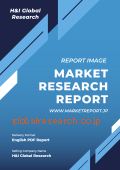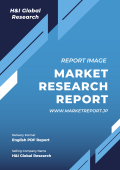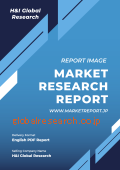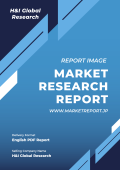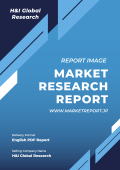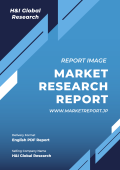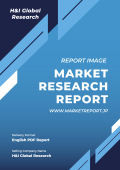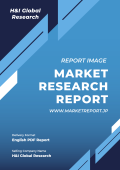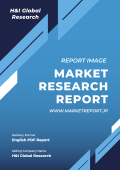世界のジェネリック医薬品市場規模は2024年に3890億米ドルに達しました。今後、IMARC Groupは、2033年までに市場規模が6749億米ドルに達し、2025年から2033年の年間平均成長率(CAGR)は5.66%になると予測しています。市場は主に、慢性疾患の発生率の増加、医療費の高騰、医薬品の特許切れによって牽引されています。ブランド薬の特許切れにより、より多くのジェネリック医薬品が市場に参入できるようになり、市場の成長を促進しています。医療費削減のためにジェネリック医薬品の使用を促進する政府の支援政策も、市場の成長に大きく貢献しています。
ジェネリック医薬品は、有効成分、投与形態、強度、投与経路、品質、安全性、有効性の面でブランド薬と生物学的に同等である医薬品です。イブプロフェン、メトホルミン、シンバスタチンなど、幅広い医薬品がジェネリック医薬品として製造されています。ジェネリック医薬品は、先発医薬品の特許保護期間が満了した後に製造されます。規制当局の承認を受け、手頃な価格で入手できます。高血圧、糖尿病、感染症、心血管疾患など、さまざまな健康状態の管理に重要な役割を果たします。特に、包括的な保険に加入していない人や高額な医療費負担に直面している人にとっては、医療費負担の軽減に不可欠です。
ブランド薬の特許切れが増えていることからジェネリック医薬品に対する需要が高まっており、これが市場の成長を後押ししています。これに加えて、世界中で医療サービス費が高騰していることも市場の見通しを良好なものにしています。さらに、世界中で高齢者人口が増加しており、心臓血管疾患、糖尿病、呼吸器疾患などのさまざまな慢性疾患を抱えていることも市場の成長に寄与しています。これ以外にも、さまざまなジェネリック医薬品の生産量を増やすために、主要な市場関係者間で提携が増加していることも市場の成長を後押ししています。さらに、製薬業界で技術的に進化した機器の統合が進み、特殊な処方でさまざまな複雑なジェネリック医薬品が生産されるようになったことも、市場の成長を後押ししています。
ジェネリック医薬品市場の動向/推進要因:
慢性疾患の増加
現在、不健康な生活習慣の増加により、一般の人々の間で慢性疾患の罹患率が上昇しています。運動不足や不健康な食生活(加工食品やファーストフードの消費増加)は、糖尿病、心臓病、特定の癌などの慢性疾患の増加に大きく影響しています。これ以外にも、アルコールやタバコの過剰摂取は、高血圧や心血管系の合併症などの様々な慢性疾患の発生を促進しています。さらに、現代のペースの速いライフスタイルの副産物であることが多い慢性的なストレスは、心臓病や精神疾患を含む多くの健康問題の原因となる可能性があります。しかし、スクリーニングや診断ツールの向上により、慢性疾患の早期発見や頻繁な発見が可能になっています。さらに、さまざまなジェネリック医薬品の使用により、患者は幅広い慢性疾患の治療が可能になっています。
製薬業界における研究関連活動の拡大
現在、製薬業界では新興疾患の治療法やワクチン開発に向けた研究活動が活発化しています。また、世界中で高齢者人口が増加しているため、医薬品の需要も高まっています。さらに、ゲノミクス、プロテオミクス、バイオインフォマティクスなどの分野における最近の進歩は、新薬の発見と開発に新たな道を開いています。分子レベルでの遺伝子やタンパク質の操作能力、および分子レベルや遺伝子レベルでの疾患メカニズムの理解の進展は、標的療法の開発への道を開いています。これとは別に、製薬会社は、患者が手頃な価格で簡単に利用できるように、ブランド薬のさまざまなジェネリック医薬品を製造することに投資しています。
手頃な価格のヘルスケアサービス提供に向けた政府主導の取り組みが増加
各国の政府機関は、ヘルスケアサービスを手頃な価格で提供することや、さまざまな慢性疾患の治療法を見つけることに多大な投資を行っています。 また、医療費の助成、薬剤費削減政策の実施、保険適用、公衆衛生施設やプログラムへの投資など、数多くの取り組みも行っています。これとは別に、各国の行政当局は、さまざまな農村地域に無料診療所を建設することで、異なる所得層や社会階層間の健康格差の縮小に重点的に取り組んでいます。これらの診療所では、無料検診に加えて、ジェネリック医薬品やその他のさまざまな医薬品を低価格で提供することにも重点を置いています。
ジェネリック医薬品市場の動向:
世界的な高齢者人口の増加と、がん、糖尿病、心血管疾患などの慢性疾患の発生率の上昇は、市場に好影響を与える主な要因のひとつです。さらに、個人の食生活パターンの変化や多忙なスケジュールは、さまざまな症状を引き起こしており、それが世界中でジェネリック医薬品の需要を促進しています。これに伴い、医療費の削減とジェネリック医薬品の製造および普及を促進する各国政府の取り組みが増加しており、市場の成長に貢献しています。また、主要企業が効果的なジェネリック医薬品を導入し、入手しやすくするよう促しています。これとは別に、ジェネリック医薬品の低製造コストが市場に明るい見通しをもたらしています。さらに、世界中の製薬会社や医療店舗の拡大が市場の成長をさらに促進しています。さらに、大手メーカーが新製品を発売するためのパートナーシップ戦略に重点的に取り組んでいることが市場の成長を後押ししています。また、広範な研究開発(R&D)活動への投資の増加や、医薬品製剤の技術的進歩が市場を牽引すると予想されています。
ジェネリック医薬品業界のセグメント:
IMARC Groupは、世界のジェネリック医薬品市場レポートの各セグメントにおける主要なトレンドの分析を提供しており、2025年から2033年までの世界および国レベルでの予測も行っています。当社のレポートでは、治療分野、薬物送達、流通チャネルに基づいて市場を分類しています。
治療分野別の内訳:
中枢神経系
心血管系
皮膚科
泌尿生殖器/ホルモン
呼吸器
リウマチ
糖尿病
腫瘍学
その他
中枢神経系が市場を独占
本レポートでは、治療分野別の市場の詳細な内訳と分析を提供しています。これには、中枢神経系、心血管系、皮膚科、泌尿生殖器/ホルモン、呼吸器、リウマチ、糖尿病、腫瘍学、その他が含まれます。レポートによると、中枢神経系が最大のセグメントを占めています。
ジェネリック医薬品は、さまざまな中枢神経系(CNS)疾患の治療において重要な役割を果たしています。 ジェネリック医薬品には、手頃な価格、入手のしやすさ、そして先発品と同等の効果など、いくつかの利点があります。 これには、これらの症状に対して一般的に処方されるフルオキセチン、セルトラリン、エスシタロプラムなどのセロトニン再取り込み阻害薬(SSRI)が含まれます。また、てんかんの治療に一般的に処方され、発作抑制に効果があることが証明されているレベチラセタム、ラモトリギン、トピラマートなどの抗てんかん薬も含まれます。これらはパーキンソン病や注意欠陥多動性障害(ADHD)の治療にも使用されます。
高血圧や高血圧症、冠動脈疾患、心不全、不整脈などの心血管系の合併症の治療には、ジェネリック医薬品が使用されています。利尿薬、アルドステロン拮抗薬、ジゴキシン、β遮断薬、カルシウム拮抗薬などがあります。
薬物送達別内訳:
経口
注射
経皮/局所
吸入
経口が市場で最大のシェアを占めています
また、本レポートでは、薬物送達方法別の詳細な内訳と分析も提供されています。これには、経口、注射、経皮/局所、吸入剤が含まれます。レポートによると、経口剤が最大の市場シェアを占めています。これは、一般的に投与が容易で、患者が自己投与できるためです。医療監督や支援を必要とせずに、自宅や外出先で服用することができます。さらに、経口薬は薬局や病院で購入でき、医療従事者から処方されることもあり、患者にとっては入手や服用が容易です。 注射針や注射、侵襲的な処置を必要としないため、非侵襲的な方法で服用でき、一部の人にとっては不快であったり不安の原因となることもあります。 消化器官から吸収され、効率的に血流に送られます。さらに、経口薬は定期的に服用しやすいことから、患者の服薬コンプライアンスも高くなります。
流通チャネル別内訳:
小売薬局
病院薬局
小売薬局が市場シェアの大半を占める
流通チャネル別の市場の詳細な内訳と分析も、このレポートで提供されています。これには、小売薬局と病院薬局が含まれます。レポートによると、小売薬局が最大の市場シェアを占めています。
小売薬局は、地域薬局または外来患者用薬局とも呼ばれ、処方薬、店頭販売(OTC)薬、その他のヘルスケア製品を消費者に直接販売する施設です。これらの薬局は、ドラッグストアチェーン、スーパーマーケット、または独立した薬局など、小売店舗で一般的に見られます。一般の人々にとって、アクセスしやすく便利な医薬品サービスを提供する上で重要な役割を果たしています。 鎮痛剤、咳止めや風邪薬、アレルギー薬など、多種多様な医薬品を取り扱っています。 さらに、サプリメント、ビタミン、パーソナルケア用品、救急用品、血圧計や血糖値測定器などの医療機器など、さまざまな健康・ウェルネス製品も取り揃えていることがよくあります。
国別内訳:
米国
中国
ブラジル
ドイツ
フランス
インド
英国
日本
カナダ
イタリア
その他
米国が圧倒的な優位性を示しており、ジェネリック医薬品市場の最大のシェアを占めています。
このレポートでは、米国、中国、ブラジル、ドイツ、フランス、インド、英国、日本、カナダ、イタリアなど、すべての主要地域市場の包括的な分析も提供しています。
米国は、この地域が高度な医療インフラと効率的な規制支援を有しているため、最大の市場シェアを占めています。これに加えて、ジェネリック医薬品の消費を患者に奨励する保険会社や医療提供者の数が増加していることが、市場の成長を促進しています。これとは別に、手頃な価格で入手できるジェネリック医薬品の増加も市場の成長を後押ししています。さらに、一般の人々の間でさまざまな慢性疾患の発生率が上昇していることも市場に好影響を与えています。
中国では、新薬の開発やジェネリック医薬品の使用促進への投資が増加しているため、この分野でのさらなる拡大が見込まれています。これに加えて、病院、介護施設、診療所の建設が増加していることも、同国の市場成長を後押ししています。
競合状況:
主要な市場参加企業は、ジェネリック医薬品のパイプライン開発に向けた研究活動に投資しています。また、特許切れのブランド医薬品のジェネリック版を市場に投入する機会を特定することにも重点的に取り組んでいます。トップ企業は、市場での地位を強化し、能力を拡大するために、戦略的パートナーシップを結んだり、買収を行ったりしています。また、他のジェネリック医薬品メーカーや医薬品開発業務受託機関(CRO)と提携したり、小規模な企業を買収したりして、新市場や新技術へのアクセスを獲得しようとしています。大手企業は、新たな市場ポジションへの参入や新興経済圏での存在感の確立により、地理的な事業範囲を拡大しています。また、徐放性製剤、経皮吸収型製剤、吸入剤、注射剤などの複雑なジェネリック医薬品の開発にも重点的に取り組んでいます。
このレポートでは、市場における競争環境の包括的な分析を提供しています。また、すべての主要企業の詳しいプロフィールも提供しています。市場における主要企業の一部は以下の通りです。
Teva Pharmaceuticals Industries Ltd.
Mylan N.V.
Novartis AG
Pfizer Inc.
Sun Pharmaceutical Industries Ltd.
Fresenius SE & Co.
Lupin Limited
Endo Pharmaceuticals Inc.
Aurobindo Pharma Limited
Aspen Pharmacare Holdings Limited
このレポートで回答される主な質問
1. 2024年の世界のジェネリック医薬品市場の規模は?
2. 2025年から2033年の間に、世界のジェネリック医薬品市場の成長率はどの程度になると予測されていますか?
3. 世界のジェネリック医薬品市場を牽引する主な要因は何ですか?
4. 世界のジェネリック医薬品市場に、COVID-19はどのような影響を与えていますか?
5. 治療分野別の世界のジェネリック医薬品市場の内訳はどのようになっていますか?
6. ジェネリック医薬品市場の世界市場における薬物送達別の内訳は?
7. ジェネリック医薬品市場の世界市場における流通チャネル別の内訳は?
8. ジェネリック医薬品市場の世界市場における主要地域は?
9. ジェネリック医薬品市場の世界市場における主要企業は?
Generic drugs are medications that are bioequivalent to brand-name drugs in terms of active ingredients, dosage form, strength, route of administration, quality, safety, and efficacy. They consist of a wide range of medications, including ibuprofen, metformin, and simvastatin. They are produced after the patent protection of the brand-name drug expires. They are approved by regulatory authorities and available at affordable prices. They play a vital role in managing various health conditions, such as hypertension, diabetes, infections, and cardiovascular diseases. They are essential in improving affordability, particularly for individuals without comprehensive insurance coverage or facing high expenses.
The increasing demand for generic drugs due to the rising number of patent expirations of brand name drugs is impelling the growth of the market. Besides this, the growing cost of healthcare services around the world is offering a favorable market outlook. In addition, the increasing geriatric population across the globe experiencing various chronic conditions, such as cardiovascular diseases, diabetes, and respiratory disorders, is contributing to the growth of the market. Apart from this, the rising number of collaborations between key market players to increase the production of various generic drugs is supporting the growth of the market. Additionally, the increasing integration of technologically advanced equipment in the pharmaceutical industry to produce various complex generic drugs with specialized formulations is bolstering the growth of the market.
Generic Drugs Market Trends/Drivers:
Rising prevalence of chronic diseases
At present, there is an increase in the prevalence of chronic diseases among the masses due to the rising adoption of unhealthy lifestyle habits. Sedentary lifestyles and poor diet (increased consumption of processed and fast foods) are significant contributors to a rise of chronic ailments like diabetes, heart disease, and certain cancers. Apart from this, the excessive consumption of alcohol and tobacco is propelling the occurrence of various chronic disorders, such as hypertension and cardiovascular complications. In addition, chronic stress, often a byproduct of the modern, fast-paced lifestyle, can contribute to a host of health problems, including heart disease and mental illness. However, enhanced screening and diagnostic tools are leading to better, earlier, and more frequent detection of chronic conditions. Furthermore, the consumption of various generic drugs is helping patients to treat a wide array of chronic diseases.
Growing research-related activities in the pharmaceutical industry
At present, there is an increase in research activities in the pharmaceutical industry to develop treatments and vaccines for emerging diseases. Besides this, the demand for medications is increasing as the geriatric population is rising around the world. Moreover, recent breakthroughs in areas, such as genomics, proteomics, and bioinformatics, are opening new avenues for drug discovery and development. The ability to manipulate genes and proteins at a molecular level, and the increasing understanding of disease mechanisms at the molecular and genetic levels, are paving the way for the development of targeted therapies. Apart from this, pharmaceutical companies are investing in manufacturing various generic versions of branded drugs to make them affordable and easily accessible for patients.
Increasing number of government initiatives to provide affordable healthcare services
Governing agencies of various countries are heavily investing in making healthcare services affordable and finding treatments for various chronic illnesses. They are also taking numerous initiatives, including subsidizing healthcare costs, implementing policies to reduce the cost of drugs, providing insurance coverage, and investing in public health facilities and programs. Apart from this, governing authorities of various countries are focusing on reducing health disparities among different income and social groups by constructing free clinics in various rural areas. These clinics are also prioritizing generic drugs and various other medications for nominal prices, along with free checkups.
Generic Drugs Market Trends:
The growing global geriatric population and the rising occurrence of chronic medical disorders, such as cancer, diabetes, and cardiovascular diseases, represent one of the key factors positively influencing the market. In addition, changing dietary patterns and hectic schedules of individuals are leading to various conditions, which, in turn, is catalyzing the demand for generic drugs worldwide. Along with this, increasing efforts by governments of various countries to reduce healthcare costs and promote the manufacturing and uptake of generics are contributing to the market growth. They are also encouraging key players to introduce effective generic drugs and provide easy availability. Apart from this, the low production cost of generic medicines is creating a positive outlook for the market. Additionally, the expansion of the pharma companies and medical stores across the globe is further augmenting the market growth. Furthermore, the rising focus of leading manufacturers on partnership strategies to launch new products is propelling the market growth. Moreover, increasing investments in extensive research and development (R&D) activities and technological advancements in medicine formulation are anticipated to drive the market.
Generic Drugs Industry Segmentation:
IMARC Group provides an analysis of the key trends in each segment of the global generic drugs market report, along with forecasts at the global and country levels from 2025-2033. Our report has categorized the market based on therapy area, drug delivery, and distribution channel.
Breakup by Therapy Area:
Central Nervous System
Cardiovascular
Dermatology
Genitourinary/Hormonal
Respiratory
Rheumatology
Diabetes
Oncology
Others
Central nervous system dominates the market
The report has provided a detailed breakup and analysis of the market based on the therapy area. This includes central nervous system, cardiovascular, dermatology, genitourinary/hormonal, respiratory, rheumatology, diabetes, oncology, and others. According to the report, central nervous system represented the largest segment.
Generic drugs play a significant role in the treatment of various central nervous system (CNS) disorders. They offer several benefits, including affordability, accessibility, and comparable efficacy to their brand-name counterparts. They comprise serotonin reuptake inhibitors (SSRIs), such as fluoxetine, sertraline, and escitalopram, that are commonly prescribed for these conditions. They also consist of antiepileptic drugs, including levetiracetam, lamotrigine, and topiramate, which are commonly prescribed and have proven efficacy in controlling seizures. They are used to treat Parkinson’s disease and attention deficit hyperactivity disorder (ADHD).
Generic drugs are employed for curing cardiovascular complications, such as hypertension or hypertension, coronary artery diseases, heart failure, and arrhythmias. They consist of diuretics, aldosterone antagonists, digoxin, beta-blockers, and calcium channel blockers.
Breakup by Drug Delivery:
Oral
Injectables
Dermal/Topical
Inhalers
Oral holds the largest share in the market
A detailed breakup and analysis of the market based on the drug delivery have also been provided in the report. This includes oral, injectables, dermal/topical, and inhalers. According to the report, oral accounted for the largest market share as they are generally easy to administer and can be self-administered by the patient. They can be taken at home or on the go without the need for medical supervision or assistance. Besides this, oral drugs can be obtained from pharmacies, hospitals, or prescribed by healthcare providers, making it convenient for patients to obtain and take their medications. They can be taken in a non-invasive manner by eliminating the need for needles, injections, or invasive procedures, which can be uncomfortable or cause anxiety for some individuals. They can get absorbed through the digestive system, allowing for efficient delivery into the bloodstream. Furthermore, oral medications offer a higher level of patient compliance as they are easy to consume regularly.
Breakup by Distribution Channel:
Retail Pharmacies
Hospital Pharmacies
Retail pharmacies account for the majority of the market share
A detailed breakup and analysis of the market based on the distribution channel have also been provided in the report. This includes retail pharmacies and hospital pharmacies. According to the report, retail pharmacies accounted for the largest market share.
Retail pharmacies, also known as community pharmacies or outpatient pharmacies, are establishments wherein prescription medications, over the counter (OTC) drugs, and other healthcare products are dispensed and sold directly to consumers. These pharmacies are commonly found in retail settings, such as drugstore chains, supermarkets, or independent pharmacies. They play a crucial role in providing accessible and convenient pharmaceutical services to the public. They present a wide variety of medications, including pain relievers, cough and cold medicines, allergy medications, and more. Besides this, they often stock various health and wellness products, such as supplements, vitamins, personal care items, first aid supplies, and medical devices like blood pressure monitors and glucose meters.
Breakup by Country:
United States
China
Brazil
Germany
France
India
United Kingdom
Japan
Canada
Italy
Others
The United States exhibits a clear dominance, accounting for the largest generic drugs market share
The report has also provided a comprehensive analysis of all the major regional markets, which include the United States, China, Brazil, Germany, France, India, the United Kingdom, Japan, Canada, Italy, and others.
The United States held the biggest market share since the region has an advanced medical infrastructure and efficient regulatory support. Besides this, the increasing number of insurance companies and healthcare providers encouraging patients to consume generic drugs is propelling the growth of the market. Apart from this, increasing availability of generic drugs at affordable prices are bolstering the growth of the market. Moreover, the growing occurrence of various chronic diseases among the masses is influencing the market positively.
China is estimated to expand further in this domain due to the increasing investments in developing novel drugs and promoting the use of generic drugs. Besides this, the rising construction of hospitals, nursing homes, and clinics is propelling the growth of the market in the country.
Competitive Landscape:
Key market players are investing in research activities to develop a pipeline of generic drugs. They are also focusing on identifying opportunities to introduce generic versions of brand-name drugs as patents expire. Top companies are forming strategic partnerships or engaging in acquisitions to strengthen their market position and expand their capabilities. They are also collaborating with other generic drug manufacturers, contract research organizations (CROs), or acquiring smaller companies to achieve access to new markets or technologies. Leading companies are expanding their geographic reach by entering new market positions and establishing a presence in emerging economies. They are also focusing on the development of complex generic drugs, such as extended-release formulations, transdermal patches, inhalers, and injectables.
The report has provided a comprehensive analysis of the competitive landscape in the market. Detailed profiles of all major companies have also been provided. Some of the key players in the market include:
Teva Pharmaceuticals Industries Ltd.
Mylan N.V.
Novartis AG
Pfizer Inc.
Sun Pharmaceutical Industries Ltd.
Fresenius SE & Co.
Lupin Limited
Endo Pharmaceuticals Inc.
Aurobindo Pharma Limited
Aspen Pharmacare Holdings Limited
Key Questions Answered in This Report
1. What was the size of the global generic drugs market in 2024?
2. What is the expected growth rate of the global generic drugs market during 2025-2033?
3. What are the key factors driving the global generic drugs market?
4. What has been the impact of COVID-19 on the global generic drugs market?
5. What is the breakup of the global generic drugs market based on the therapy area?
6. What is the breakup of the global generic drugs market based on the drug delivery?
7. What is the breakup of the global generic drugs market based on the distribution channel?
8. What are the key regions in the global generic drugs market?
9. Who are the key players/companies in the global generic drugs market?
1 Preface
2 Scope and Methodology
2.1 Objectives of the Study
2.2 Stakeholders
2.3 Data Sources
2.3.1 Primary Sources
2.3.2 Secondary Sources
2.4 Market Estimation
2.4.1 Bottom-Up Approach
2.4.2 Top-Down Approach
2.5 Forecasting Methodology
3 Executive Summary
4 Introduction
4.1 Overview
4.2 Key Industry Trends
5 Global Generic Drugs Industry
5.1 Market Overview
5.2 Market Performance
5.3 Impact of COVID-19
5.4 Market Breakup by Country
5.5 Market Breakup by Therapy Area
5.6 Market Breakup by Drug Delivery
5.7 Market Breakup by Distribution Channel
5.8 Market Forecast
5.9 SWOT Analysis
5.9.1 Overview
5.9.2 Strengths
5.9.3 Weaknesses
5.9.4 Opportunities
5.9.5 Threats
5.10 Value Chain Analysis
5.10.1 Research and Development
5.10.2 Manufacturing
5.10.3 Marketing and Distribution
5.11 Porter’s Five Forces Analysis
5.11.1 Overview
5.11.2 Bargaining Power of Buyers
5.11.3 Bargaining Power of Suppliers
5.11.4 Degree of Competition
5.11.5 Threat of New Entrants
5.11.6 Threat of Substitutes
5.12 Regulations in the Generic Industry
5.13 Key Market Drivers and Success Factors
6 Performance of Key Countries
6.1 United States
6.1.1 Market Trends
6.1.2 Market Forecast
6.2 China
6.2.1 Market Trends
6.2.2 Market Forecast
6.3 Brazil
6.3.1 Market Trends
6.3.2 Market Forecast
6.4 Germany
6.4.1 Market Trends
6.4.2 Market Forecast
6.5 France
6.5.1 Market Trends
6.5.2 Market Forecast
6.6 India
6.6.1 Market Trends
6.6.2 Market Forecast
6.7 United Kingdom
6.7.1 Market Trends
6.7.2 Market Forecast
6.8 Japan
6.8.1 Market Trends
6.8.2 Market Forecast
6.9 Canada
6.9.1 Market Trends
6.9.2 Market Forecast
6.10 Italy
6.10.1 Market Trends
6.10.2 Market Forecast
6.11 Others
6.11.1 Market Trends
6.11.2 Market Forecast
7 Market Breakup by Therapy Area
7.1 Central Nervous System
7.1.1 Market Trends
7.1.2 Market Forecast
7.2 Cardiovascular
7.2.1 Market Trends
7.2.2 Market Forecast
7.3 Dermatology
7.3.1 Market Trends
7.3.2 Market Forecast
7.4 Genitourinary/Hormonal
7.4.1 Market Trends
7.4.2 Market Forecast
7.5 Respiratory
7.5.1 Market Trends
7.5.2 Market Forecast
7.6 Rheumatology
7.6.1 Market Trends
7.6.2 Market Forecast
7.7 Diabetes
7.7.1 Market Trends
7.7.2 Market Forecast
7.8 Oncology
7.8.1 Market Trends
7.8.2 Market Forecast
7.9 Others
7.9.1 Market Trends
7.9.2 Market Forecast
8 Market Breakup by Drug Delivery
8.1 Oral
8.1.1 Market Trends
8.1.2 Market Forecast
8.2 Injectables
8.2.1 Market Trends
8.2.2 Market Forecast
8.3 Dermal/Topical
8.3.1 Market Trends
8.3.2 Market Forecast
8.4 Inhalers
8.4.1 Market Trends
8.4.2 Market Forecast
9 Market Breakup by Distribution Channel
9.1 Retail Pharmacies
9.1.1 Market Trends
9.1.2 Market Forecast
9.2 Hospital Pharmacies
9.2.1 Market Trends
9.2.2 Market Forecast
10 Competitive Landscape
10.1 Market Structure
10.2 Market Breakup by Key Players
10.3 Key Player Profiles
10.3.1 Teva Pharmaceuticals Industries Ltd.
10.3.2 Mylan N.V.
10.3.3 Novartis AG
10.3.4 Pfizer Inc.
10.3.5 Sun Pharmaceutical Industries Ltd.
10.3.6 Fresenius SE & Co.
10.3.7 Lupin Limited
10.3.8 Endo Pharmaceuticals Inc.
10.3.9 Aurobindo Pharma Limited
10.3.10 Aspen Pharmacare Holdings Limited
11 Generic Drugs Manufacturing Process
11.1 Product Overview
11.2 Detailed Process Flow (Tablets)
11.3 Detailed Process Flow (Injectable)
11.4 Various Types of Unit Operations Involved
11.5 Mass Balance and Raw Material Requirements
12 Project Details, Requirements and Costs Involved
12.1 Land Requirements and Expenditures
12.2 Construction Requirements and Expenditures
12.3 Plant Machinery
12.4 Machinery Pictures
12.5 Raw Material Requirements and Expenditures
12.6 Packaging Requirements and Expenditures
12.7 Transportation Requirements and Expenditures
12.8 Utility Requirements and Expenditures
12.9 Manpower Requirements and Expenditures
12.10 Other Capital Investments
13 Loans and Financial Assistance
14 Project Economics
14.1 Capital Cost of the Project
14.2 Techno-Economic Parameters
14.3 Product Pricing and Margins Across Various Levels of the Supply Chain
14.4 Taxation and Depreciation
14.5 Income Projections
14.6 Expenditure Projections
14.7 Financial Analysis
14.8 Profit Analysis
*** ジェネリック医薬品の世界市場に関するよくある質問(FAQ) ***
・ジェネリック医薬品の世界市場規模は?
→IMARC社は2024年のジェネリック医薬品の世界市場規模を3890億米ドルと推定しています。
・ジェネリック医薬品の世界市場予測は?
→IMARC社は2033年のジェネリック医薬品の世界市場規模を6749億米ドルと予測しています。
・ジェネリック医薬品市場の成長率は?
→IMARC社はジェネリック医薬品の世界市場が2025年~2033年に年平均5.7%成長すると展望しています。
・世界のジェネリック医薬品市場における主要プレイヤーは?
→「Teva Pharmaceuticals Industries Ltd., Mylan N.V., Novartis AG, Pfizer Inc., Sun Pharmaceutical Industries Ltd., Fresenius SE & Co., Lupin Limited, Endo Pharmaceuticals Inc., Aurobindo Pharma Limited, Aspen Pharmacare Holdings Limitedなど ...」をジェネリック医薬品市場のグローバル主要プレイヤーとして判断しています。
※上記FAQの市場規模、市場予測、成長率、主要企業に関する情報は本レポートの概要を作成した時点での情報であり、最終レポートの情報と少し異なる場合があります。
*** 免責事項 ***
https://www.globalresearch.co.jp/disclaimer/
